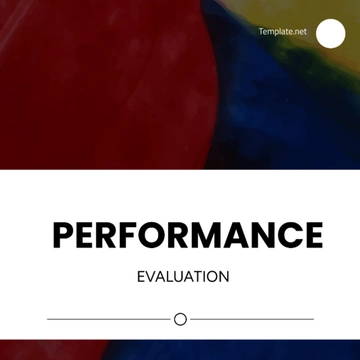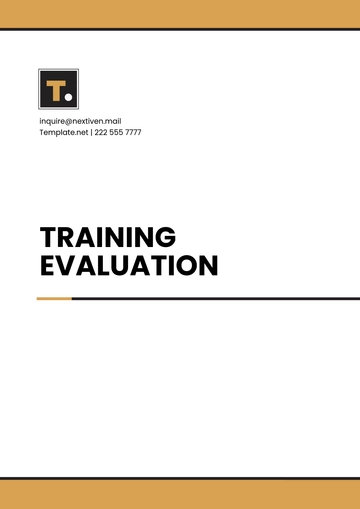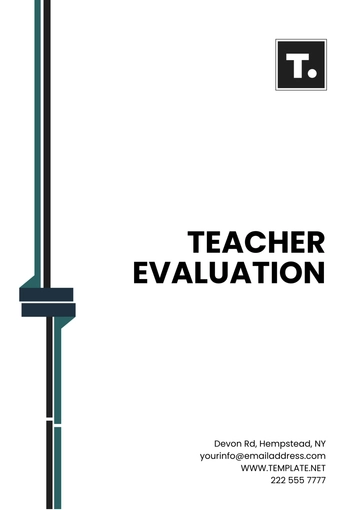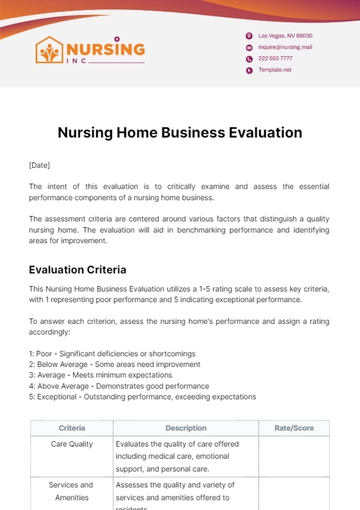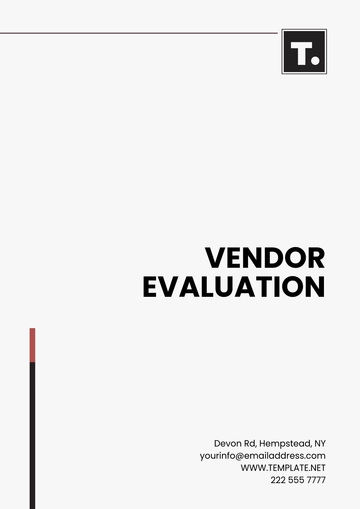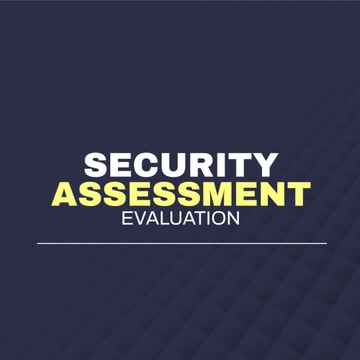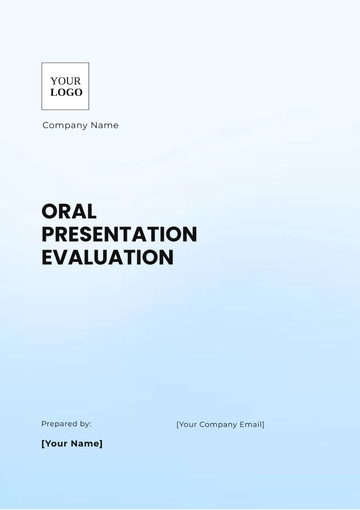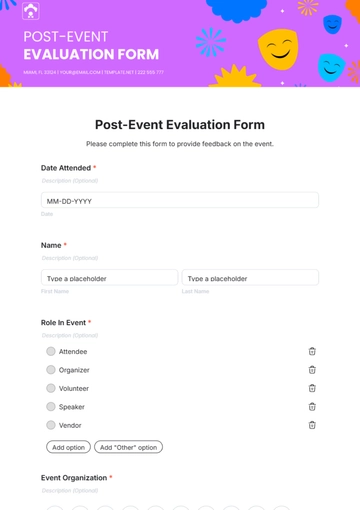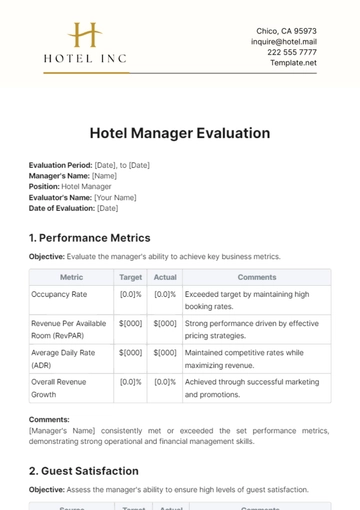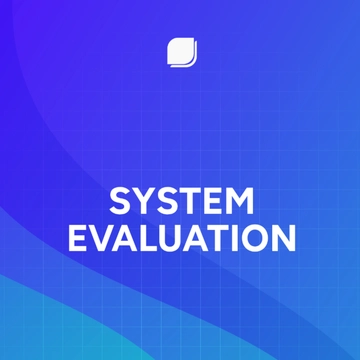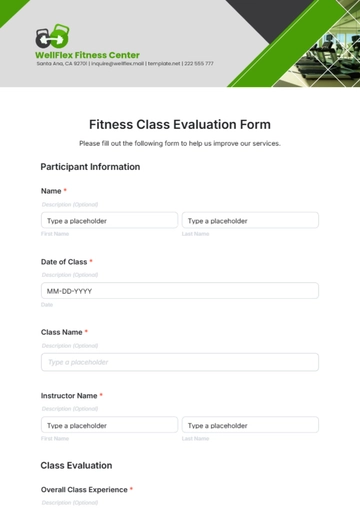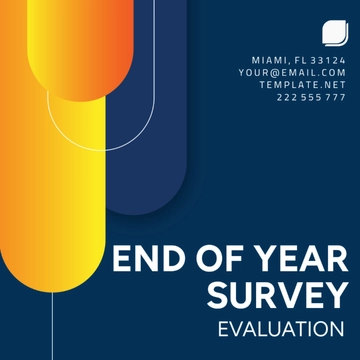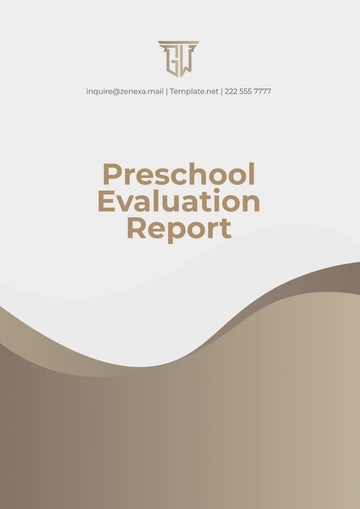Free Financial Procedures Evaluation Manual
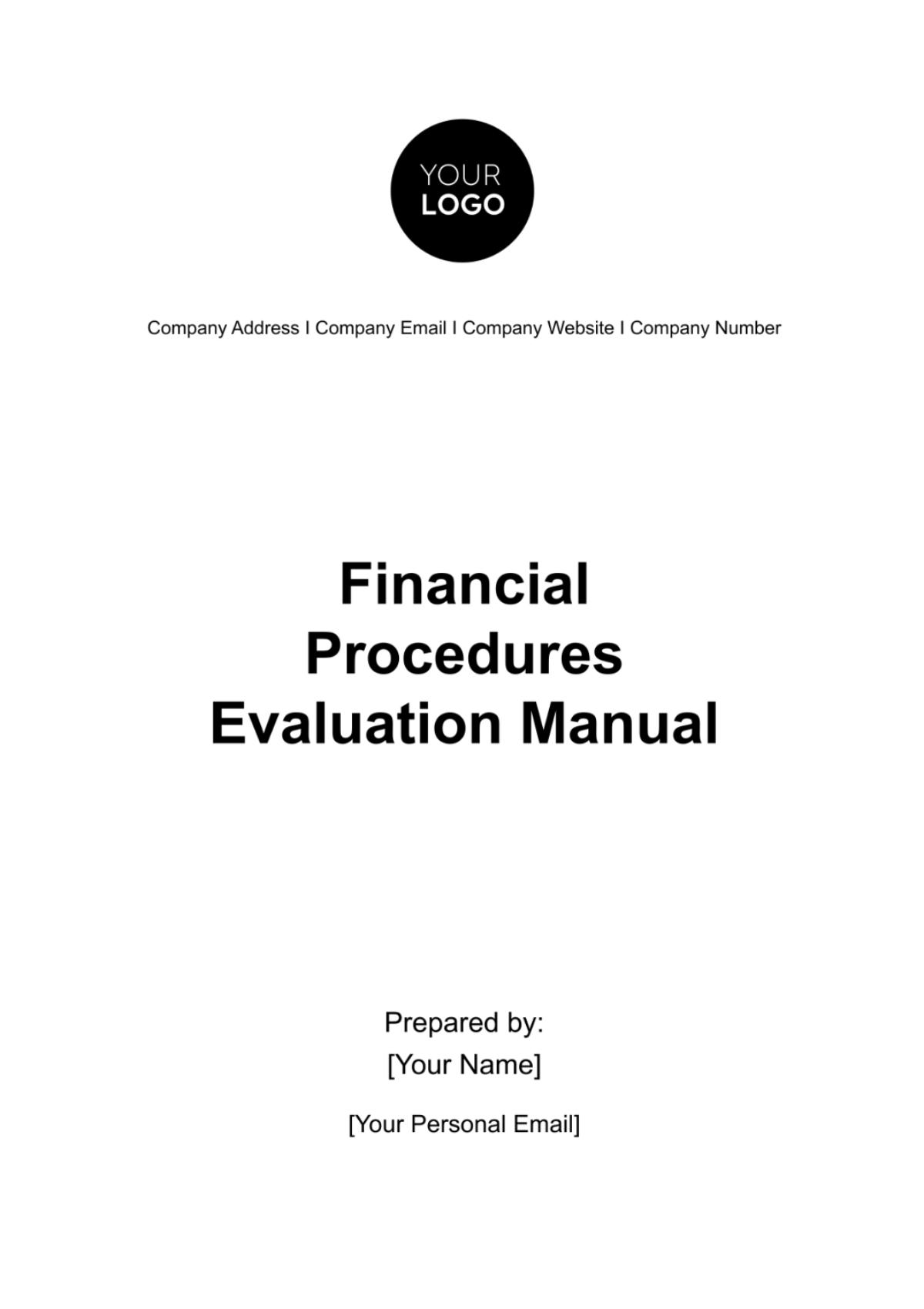
Introduction
Welcome to the Financial Procedures Evaluation Manual of [Your Company Name]. As a leading financial institution, we are committed to maintaining the highest standards of financial management and transparency. This manual serves as a comprehensive guide to evaluating and enhancing our financial procedures to ensure accuracy, efficiency, and compliance with industry regulations.
The purpose of this manual is twofold. First, it aims to establish a standardized approach to evaluating our financial procedures, providing a framework for consistent assessment. Second, it serves as a tool for continuous improvement, guiding us in identifying areas where our financial processes can be refined for optimal performance.
Scope
A. [Your Company Name] Financial Processes
This manual encompasses the entire spectrum of financial processes within [Your Company Name], including but not limited to:
Budgeting: The process of creating and managing budgets to allocate resources effectively.
Accounting: Recording, classifying, and summarizing financial transactions for accurate reporting.
Invoicing: Generating and managing invoices for goods and services rendered.
Financial Reporting: Compiling and analyzing financial data to create comprehensive reports for decision-making.
B. Exclusions
While this manual covers a broad range of financial processes, certain activities may fall outside its scope. These exclusions are explicitly outlined to avoid any ambiguity in the evaluation process. Excluded processes may include:
Payroll Processing: The evaluation of payroll processes falls outside the scope of this manual and is governed by a separate set of procedures.
Taxation Compliance: Detailed assessments of tax compliance are not covered by this manual and are subject to specialized evaluations.
Investment Management: Evaluation of investment strategies and portfolio management is excluded from this manual and is subject to a distinct review process.
Roles and Responsibilities
A. [Your Name]
In the context of financial procedures evaluation, [Your Name] plays a crucial role as the lead evaluator. Responsibilities include:
Coordination: Oversee the entire evaluation process, ensuring smooth collaboration within the evaluation team.
Communication: Serve as the primary point of contact for communication with relevant stakeholders and team members.
Analysis: Contribute to the analysis of financial data and the formulation of improvement recommendations.
B. Evaluation Team
The evaluation team is composed of cross-functional experts from various departments. Each team member has specific roles and responsibilities:
Financial Analysts: Responsible for conducting in-depth analysis of financial data and identifying areas for improvement.
Compliance Officers: Ensure that financial procedures align with regulatory requirements and industry standards.
Process Experts: Provide insights into the efficiency and effectiveness of specific financial processes.
Evaluation Criteria
A. Compliance
To assess compliance, the evaluation criteria include:
Legal Standards: Evaluate adherence to relevant financial laws and regulations.
Internal Policies: Ensure alignment with internal policies and procedures.
Audit Findings: Consider any findings from internal or external audits.
B. Efficiency
Efficiency is evaluated based on:
Turnaround Times: Assess the time taken for key financial processes.
Resource Utilization: Evaluate the allocation of resources in financial activities.
Workflow Optimization: Identify opportunities for streamlining workflows.
C. Accuracy
To ensure accuracy, the evaluation criteria encompass:
Data Integrity: Assess the accuracy and reliability of financial data.
Error Rates: Analyze the occurrence of errors in financial transactions.
Reconciliation Processes: Evaluate the effectiveness of reconciliation processes.
Evaluation Process
A. Pre-Evaluation Preparation
Before initiating the evaluation process, thorough preparation is essential:
Data Gathering: Collect relevant financial data, including transaction records, reports, and audit findings.
Team Preparation: Ensure that the evaluation team is adequately briefed on the objectives and criteria of the evaluation.
Stakeholder Communication: Notify relevant stakeholders about the upcoming evaluation and its purpose.
B. On-Site Evaluation
Conducting on-site evaluations involves a systematic approach:
Interviews: Engage with key personnel involved in financial processes to gather insights and identify potential challenges.
Document Reviews: Scrutinize financial documents, such as invoices, ledgers, and financial statements, to assess accuracy and compliance.
Observations: Observe the actual execution of financial procedures to identify any deviations from documented processes.
C. Data Analysis
Once on-site evaluations are complete, a detailed analysis of collected data is crucial:
Quantitative Analysis: Use statistical tools to analyze numerical data, identifying trends, anomalies, and areas for improvement.
Qualitative Analysis: Evaluate the qualitative aspects of financial processes, considering feedback from interviews and observations.
Benchmarking: Compare our financial processes against industry benchmarks to identify areas where improvements can be made.
D. Reporting
The reporting phase involves compiling and presenting the evaluation findings:
Executive Summary: Provide a concise overview of the evaluation, highlighting key findings and recommendations.
Detailed Analysis: Present a comprehensive analysis of each evaluated financial process, including strengths, weaknesses, and opportunities for improvement.
Recommendations: Clearly outline specific recommendations for enhancing compliance, efficiency, and accuracy.
Improvement Recommendations
A. Identified Areas for Improvement
Based on the evaluation findings, specific areas requiring improvement include:
Streamlining Invoice Processing: Implement measures to reduce the time taken for invoice processing.
Enhancing Data Accuracy: Introduce validation checks to minimize errors in financial data entry.
Updating Compliance Protocols: Revise internal protocols to align with the latest regulatory requirements.
B. Recommendations
To address the identified areas for improvement, the following recommendations are proposed:
Invest in Automation: Explore opportunities to automate repetitive financial tasks to improve efficiency.
Provide Ongoing Training: Ensure that employees involved in financial processes receive regular training on updated procedures and compliance requirements.
Periodic Process Audits: Establish a schedule for periodic audits to monitor the effectiveness of implemented improvements.
Implementation Plan
A. Prioritization
Prioritizing improvements is crucial for effective implementation:
Critical Areas: Identify and prioritize improvements in critical areas that have a high impact on compliance, efficiency, or accuracy.
Resource Availability: Consider the availability of resources, both financial and human, when prioritizing implementation.
Timeline Sensitivity: Assess the sensitivity of certain improvements to timelines, addressing urgent needs first.
B. Timeline
A detailed timeline for implementation is essential for accountability:
Short-Term Goals: Outline improvements that can be implemented within the next [6 months].
Medium-Term Goals: Identify improvements requiring moderate timeframes, balancing urgency and thorough implementation.
Long-Term Goals: Plan for more extensive changes that may require significant time and resources.
Communication Plan
A. Internal Communication
Ensuring transparent and effective internal communication is crucial throughout the evaluation process:
Stakeholder Updates: Regularly update all relevant stakeholders, including department heads and employees, on the progress of the evaluation. Provide clear and concise summaries of findings and proposed improvements.
Feedback Channels: Establish dedicated channels, such as forums or surveys, for employees to provide feedback and raise concerns during the evaluation. Encourage an open dialogue to address any questions or uncertainties.
B. External Communication
Maintaining transparency with external parties is essential for building trust and managing expectations:
Client/Partner Notification: If applicable, inform clients or partners about the ongoing evaluation and its potential impact on services. Provide reassurance regarding the commitment to continuous improvement and adherence to industry standards.
Regulatory Authorities: Ensure compliance with any regulatory requirements regarding communication on internal evaluations. Keep regulatory authorities informed about the scope and progress of the evaluation as needed.
Training and Development
A. Training Needs Analysis
A thorough analysis of training needs is essential to address any skill gaps identified during the evaluation:
Skills Assessment: Conduct a comprehensive skills assessment to identify areas where employees involved in financial processes may require additional training. Utilize surveys, interviews, and performance evaluations to gather insights.
Training Programs: Develop tailored training programs that specifically address the identified skill gaps. These programs may include workshops, online courses, or external training opportunities to enhance the competencies of the financial team.
B. Continuous Learning
Encouraging a culture of continuous learning within the organization contributes to ongoing improvement:
Knowledge Sharing: Facilitate regular knowledge-sharing sessions where employees can share insights, best practices, and lessons learned related to financial procedures. Create a collaborative environment that encourages cross-departmental learning.
Certifications: Support employees in obtaining relevant certifications related to financial management. These certifications not only enhance individual expertise but also contribute to the overall competence of the financial team.
Monitoring and Review
A. Continuous Monitoring
Sustained improvements necessitate continuous monitoring:
Key Performance Indicators (KPIs): Define specific KPIs related to compliance, efficiency, and accuracy to monitor ongoing performance.
Regular Audits: Conduct periodic internal audits to ensure adherence to implemented improvements.
Feedback Mechanisms: Establish channels for employees to provide feedback on the effectiveness of changes.
B. Periodic Reviews
Scheduled reviews ensure that financial procedures remain aligned with organizational goals:
Annual Reviews: Conduct comprehensive annual reviews of financial procedures to assess their continued relevance and effectiveness.
Regulatory Updates: Stay informed about changes in financial regulations and update procedures accordingly.
Benchmarking: Periodically benchmark our financial processes against industry standards to identify opportunities for further improvement.
- 100% Customizable, free editor
- Access 1 Million+ Templates, photo’s & graphics
- Download or share as a template
- Click and replace photos, graphics, text, backgrounds
- Resize, crop, AI write & more
- Access advanced editor
Efficiently assess and enhance your financial procedures with our Template.net Financial Procedures Evaluation Manual Template. This editable and customizable tool empowers you to tailor your evaluation process effortlessly. Utilize our Ai Editor Tool to make personalized adjustments, ensuring a streamlined and effective financial procedures assessment. Elevate your evaluation practices with this user-friendly and versatile template.

